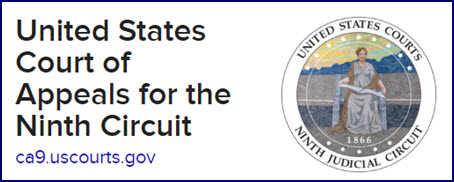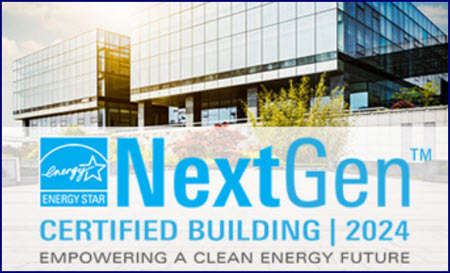View Full Report – 2023 Annual Report – Sustained Strength, Sustained Solutions
Tag: Climate Policy
Roundtable, Nareit Critique Proposed International Standard for Building Emissions
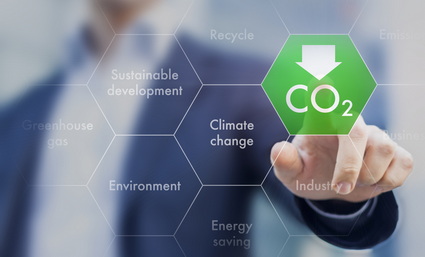

As the buildings sector makes progress on reducing greenhouse gas emissions to meet global climate goals, The Roundtable and Nareit submitted comments today about proposed guidance that would create “unworkable and unattainable” standards. (RER-Nareit joint comments)
Science-Based Targets
- The real estate groups submitted their joint letter to the Science-Based Targets initiative (“SBTi”), a body with global influence. In May, SBTi released extensive draft guidance for companies in the buildings sector to set emissions reduction levels based on climate science. SBTi’s targets aim to achieve a goal of “net zero emissions” by 2050 in accord with the 2016 Paris Agreement administered by the United Nations.
- The controversial draft guidance was developed by an advisory group comprised largely of academia and environmental organizations—with minimal representation from real estate developers, owners, and financial institutions. SBTi asked stakeholders to comment on its proposal, prompting the letter from The Roundtable and Nareit.
- A number of real estate companies use science-based protocols to establish portfolio-wide emissions reductions targets. The Roundtable convened a working group of its Sustainability Policy Committee (SPAC) to review and assess SBTi’s draft guidance. Nareit conducted a similar process with its members. These efforts resulted in the organizations’ unified position.
RER-Nareit Position
- The Roundtable and Nareit seek a constructive dialogue with SBTi, as their letter explains. However, the real estate groups expressed concern that SBTi’s proposal would require building stakeholders to set emissions targets for sources and operations they do not control, based too heavily on estimates and speculation as opposed to actual and verifiable data.
- Key points raised in the joint comments include:

- Building owners must have options to purchase off-site renewable energy when they set science-based targets. Real estate in dense urban areas faces major barriers to deploy solar panels and similar measures on-site, so owners should be encouraged to increase overall clean energy supplies for broader market availability.
- There should be no categorical, across-the-board mandate to set emissions targets based on tenants’ energy use because building owners do not control operations in leased spaces. Nor do owners have general access to meter data showing how much energy a tenant uses.
- Emissions goals should not require, in all circumstances, reporting on “embodied carbon” in materials. Manufacturers do not uniformly provide such embodied emissions data for the concrete, steel, and other products they produce—so building stakeholders should not be required to guess this information in their climate reports.
- Full-blown building electrification is not practicable, feasible, or even desirable for occupants’ safety and comfort in all cases. SBTi should abandon its proposed ban on all new fossil fuel building installations starting in 2025.
- Building owners must have options to purchase off-site renewable energy when they set science-based targets. Real estate in dense urban areas faces major barriers to deploy solar panels and similar measures on-site, so owners should be encouraged to increase overall clean energy supplies for broader market availability.
Why It Matters

- There is no mandate in the U.S. at the federal level for real estate companies to set science-based emissions targets. However, anticipated rules from the U.S. Securities and Exchange Commission are expected to require registered companies to report to investors on material climate-related financial risks. Those disclosures could include corporate efforts to reduce emissions following SBTi’s and similar standards. (Roundtable Weekly, March 17, March 6 and June 10, 2022).
- In addition, key aspects of SBTi’s proposal counter voluntary efforts underway at the U.S. Environmental Protection Agency and the U.S. Department of Energy that recognize advances in low-carbon buildings and portfolios. (Roundtable Weekly, March 3 and March 4, 2022)
- Moreover, varying and often conflicting climate mandates on buildings are proliferating at the local level. (Roundtable Weekly, Dec. 9, 2022). SBTi’s proposed approach should not gain traction in regulatory building performance standards imposed by cities and states.
A final version of SBTi’s buildings sector guidance is expected this fall. The Roundtable will continue to track the issue, coordinate with Nareit and other allied groups, and educate policy makers as this matter develops.
# # #
Federal Appeals Court Strikes Local Natural Gas Ban on New Construction


A federal appeals court on Monday struck a local law that banned natural gas hook-ups to new buildings. (Wall Street Journal, April 17 and AP News, April 18)
State and Local Gas Bans
- In California Restaurant Ass’n v. City of Berkeley, the Ninth Circuit Court of Appeals ruled that a Berkeley, California ordinance was illegal because federal law “preempts” local building codes that try to prohibit stoves, furnaces and other appliances that use natural gas. (Politico E&E News, April 18).
- Dozens of cities including New York, Washington, D.C, Los Angeles, and Chicago—and the states of California, Colorado, Maryland, and Washington—have passed building electrification mandates requiring new construction to install expensive heat pumps and other electric equipment for heating, cooling, and cooking.
- New York Governor Kathy Hochul (D) has proposed a similar statewide ban on natural gas furnaces as a way to fight climate change. (Bloomberg, Jan. 23)
Impact of Court Ruling
- The Ninth Circuit’s reasoning will likely prompt federal preemption challenges and may pose a “chilling effect” to similar state and local building decarbonization laws. (E&E News, April 18). Yet, environmental advocates maintain that the ruling is limited in scope and will not call into question other gas bans. (POLITICO, April 18)
- Meanwhile, about 20 states have gone the other way with “bans on bans.” These laws would prohibit their cities and municipalities from stopping natural gas distribution and requiring all-electric new buildings.
- “States and localities can’t skirt the text of broad preemption provisions” in a law passed by Congress to address the 1970s energy crisis, Judge Patrick Bumatay wrote for the Ninth Circuit’s unanimous opinion.
As its next litigation option, the City of Berkeley might ask for a fuller panel of Ninth Circuit judges to uphold its ordinance. The Roundtable will continue to monitor how local natural gas bans and related building performance standards impact federal-level policies that address real estate’s role to help tackle climate change. (Roundtable Weekly, March 3 and Jan. 20)
# # #
Energy Department Releases Latest Nationwide Data on Building Energy Use
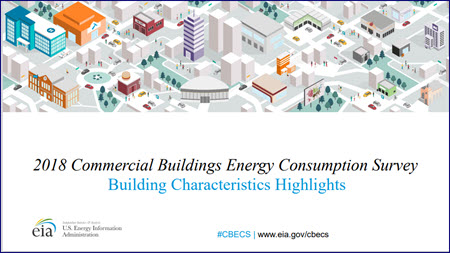
The Department of Energy (DOE) this week presented its latest data on energy use in U.S. commercial buildings. The nationwide information released by DOE’s Energy Information Administration (EIA) is the basis for ENERGY STAR building scores from the Environmental Protection Agency (EPA). (EIA final results and reports)
CBECS Results
- The latest Commercial Buildings Energy Consumption Survey (CBECS) reflects information collected in 2018. Although this is EIA’s newest building data, it is a “snapshot” in time—and does not account for occupancy rates or energy usage during or after the COVID-19 pandemic.
- According to the 2018 CBECS, there are an estimated 5.9 million public and private commercial buildings in the U.S. across non-residential asset classes—75% of which were constructed before the year 2000. (CBECS “building characteristics” highlights)
- Key CBECS findings on building energy consumption and expenditures include:
- Building energy efficiency improved compared to the 2012 survey.
Total floor space in commercial buildings increased yet energy consumption did not. Commercial buildings overall consumed 12% less energy per square foot of floor space in 2018 than in 2012. - Electricity and natural gas accounted for about 94% of energy consumed.
Electricity accounted for 60% of energy consumed (mostly for cooling) and natural gas for 34% (mostly for heating). - Large buildings were fewer but consumed over one-third of energy.
Buildings over 100,000 square feet accounted for 2% of all commercial buildings—yet covered 34% of total commercial floor space. The newest buildings were the most energy intensive. - Commercial buildings spent $141 billion on energy in 2018, averaging $1.46 per square foot.
Commercial buildings spent $119 billion on electricity, or 84% of their total energy expenditures. Natural gas accounted for 12% of total commercial building energy expenditures ($16 billion). - Space heating accounted for close to one-third of end-use consumption.
Space heating was the most energy-intensive end use, especially in colder climates. Office equipment and computing were the least intensive end uses.
- Building energy efficiency improved compared to the 2012 survey.
- EIA held a webinar this week explaining the 2018 CBECS results, which will posted on their website soon.
ENERGY STAR & NextGen Label
- EPA’s successful ENERGY STAR score—an efficiency rating for buildings—is generally based on CBECS data.
- EPA is expected to update its models for calculating ENERGY STAR ratings in 2025, under the newly-released 2018 CBECS data. The anticipated update could greatly alter a building’s current ENERGY STAR score (presently based on 2012 CBECS data).
- EPA recently proposed a new voluntary label for low-carbon buildings. The NextGen label would expand upon ENERGY STAR and recognize buildings that use significant percentages of solar and other forms of renewable energy.
The Real Estate Roundtable submitted comments to EPA last month on the NextGen building label proposal. (Roundtable letter and Roundtable Weekly, March 3)
# # #
SEC Chair Indicates Possible Scale-Back of “Scope 3” Emissions Reporting
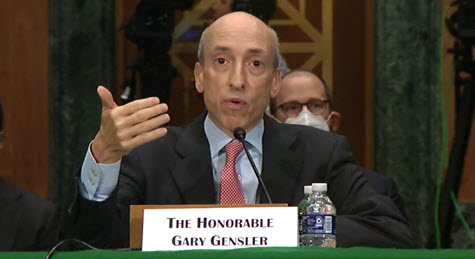
 U.S. Securities and Exchange Commission (SEC) Chair Gary Gensler commented on March 6 that the agency’s forthcoming rule on climate reporting may be scaled-back, including its proposal for sweeping disclosures on Scope 3 GHG emissions, according to CNBC.
U.S. Securities and Exchange Commission (SEC) Chair Gary Gensler commented on March 6 that the agency’s forthcoming rule on climate reporting may be scaled-back, including its proposal for sweeping disclosures on Scope 3 GHG emissions, according to CNBC.
Scope 3 Proposal
- Scope 3 refers to indirect emissions that are part of an organization’s value chain but not owned or controlled by the reporting company. The 2022 SEC proposal would require corporate issuers of securities to estimate and report Scope 3 emissions “if material” in 10-Ks and other filings. (SEC News Release, March 22, 2022)
- Roundtable comments submitted last June called the SEC’s proposed treatment of Scope 3 disclosures a “back-door mandate” and urged the agency to drop it. (Roundtable Weekly, June 10, 2022)
- The SEC’s final rulemaking process is ongoing. Gensler acknowledged that the agency received a record 15,000 public comments and “adjustments” to the proposed rule were likely. (Bloomberg Law, March 6; CNBC, Feb 10)
- Some stakeholders have signaled potential litigation by questioning whether the SEC has “clear” legal authority to regulate climate matters in light of recent Supreme Court precedent. (SCOTUSblog, June 30, 2022 | Pensions & Investments, March 7, 2023)
- Gensler told POLITICO this week that any final climate rule must be “durable” and “sustainable.” “It doesn’t protect investors … if we have a rule overturned in court,” he said.
Congress Weighs In
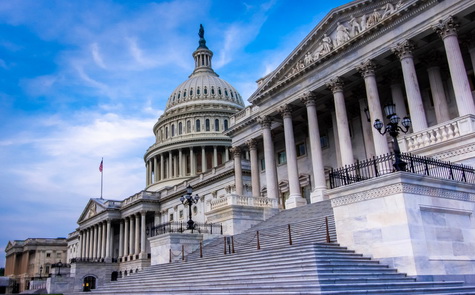
- The SEC’s climate rule is the focus of dueling letters by members of Congress. Democrats wrote in a March 5 letter that the agency should not “soften” or “scale back” proposed climate discloures. Reports that the SEC might “curtail” Scope 3 reporting, among other matters, are “deeply concerning,” the Democrats wrote.
- Republicans wrote to Gensler on Feb 22, stating the proposed rule exceeds the Commission’s authority. The GOP letter states, “Congress created the SEC to carry out the mission of protecting investors, maintaining fair, orderly, and efficient markets, and facilitating capital formation—not to advance progressive climate policies.”
A final rule is anticipated from the SEC this spring. The Roundtable’s Sustainability Policy Advisory Committee (SPAC) will continue to track any developments on the agency’s proposed rule and other climate-related regulatory proposals affecting CRE.
# # #
White House Announces Federal Building Performance Standards

The White House on Wednesday released a new standard to reduce scope 1 “direct” emissions from fossil fuels combusted to heat and cool federal buildings. (CNBC |UPI | PoliticoPro, Dec. 7)
Federal Building Performance Standard (BPS)
- The Federal BPS from the White House Council on Environmental Quality (CEQ) applies to the 300,000 existing buildings owned by the U.S. government. It sets a 2030 goal for each federal agency to eliminate scope 1 emissions in 30% of its facilities. (White House Fact Sheet)
- The Federal BPS “prioritiz[es] energy efficiency and the elimination of on-site fossil fuel use.” It is a stepping-stone toward the Biden administration’s ultimate goal of “net zero” emissions by 2045 across all federal facilities. (Exec. Order 14057, Dec. 8, 2021)
- The Federal BPS’s “performance pathway” would achieve the goal for zero scope 1 emissions “through efficient electrification of all equipment and appliances.”
- The Federal BPS also offers a “prescriptive pathway” for specific replacement of gas-fired furnaces and boilers. This alternate compliance route recognizes that “full decarbonization may not be practicable today” considering a building’s size and climate zone—and is designed to account for the market availability and cost-effectiveness of electrification equipment.
Relevance to Other GHG Standards
- While the Federal BPS intends to reduce on-site scope 1 emissions, it will likely increase scope 2 emissions from electricity purchased by the federal government to power electric heat pumps, hot water heaters, and similar equipment.
- Furthermore, the Federal BPS—and its focus to reduce fossil fuels on-site—might set an easier standard compared to a number of emerging BPS mandates at the state and municipal level.
- Some local BPS laws may effectively require buildings to reduce overall GHG emissions at their source, which depends on whether local power grids provide “clean” electricity from solar, wind, or other renewable energy. EPA data that profiles “fuel mixes” used to generate electricity, however, indicate that coal, gas and other non-renewables account for 80 percent of the fuels that power electric grids nationally.
- Also, local BPS laws may not offer a “prescriptive” compliance path similar to the Federal BPS that contemplates cost effectiveness in building electrification retrofits.
- Notably, the Federal BPS sets no requirements for U.S.-owned buildings to reduce their upstream and downstream “scope 3” emissions outside of an owners’ control. (EPA website)
- Possible measurement and reporting of scope 3 emissions has been a controversial element of a private sector, corporate GHG disclosure rule proposed by the U.S. Securities and Exchange Commission that has not yet been finalized. (Roundtable Weekly, June 10)
Other Building Policies

- The U.S. Department of Energy (DOE) also on Wednesday proposed a rule that would establish the first-ever emissions standards for new federal construction and major renovations. Like the Federal BPS for existing federal assets, DOE’s proposed rule “aims to accelerate” electrification by phasing out on-site fossil fuel usage for heating and hot water. (DOE news release)
- The White House also announced this week that California has joined the National Building Performance Standards Coalition, a group of over 30 states and localities committed to adopt BPS policies by Earth Day 2024. (White House Fact Sheet)
The White House’s announcements touted DOE’s Better Climate Challenge—a voluntary “pledge” that includes Roundtable members as “partners” who have committed to reduce portfolio-wide scopes 1 and 2 emissions by at least 50% within 10 years. The Roundtable is an “ally” supporting DOE’s Challenge. (Roundtable Weekly, March 4)
# # #
White House Releases Net-Zero “Road Map” as EPA Credits Strides in Building Efficiency
The Biden administration this month released a “road map” to reach net zero emissions by 2050 by focusing on five key areas for research and development, including efficient buildings and grid decarbonization. (White House Fact Sheet)
Buildings Sector Emissions
- One of the priorities in the administration’s net zero initiative is to accelerate innovation in “efficient building heating and cooling.” It notes that HVAC is responsible for nearly a fifth of commercial building energy use.
- “Innovation is required to reduce upfront costs to enable widespread adoption” of retrofits that replace traditional HVAC systems with heat pumps, automated controls that interact with the grid, and the switch to refrigerants with low global warming potential, according to the R&D report.
ENERGY STAR Commercial Buildings
- The Environmental Protection Agency (EPA) released a separate report this week marking two decades of ENERGY STAR Commercial Buildings. EPA concluded that the overall stock of U.S. office buildings has become 30 percent more energy efficient since the turn of the century. Top-of-class “certified” office buildings decreased energy use by 30 percent in the last decade alone.
- EPA’s “Two Decades of ENERGY STAR” study also found that owners and managers cite “operations and maintenance” as the most important factor to optimize building energy performance—more than investments in original design and construction, or to retrofit older buildings with new equipment.
Net-Zero Tracker
- New data show corporate emissions cuts still lag far behind their pledges. A “Net-Zero Tracker“ by the investment research firm MSCI finds public companies’ emissions are out of step with global targets. (Axios, Oct. 18 and Nov. 3)
- Additionally, an Accenture report shows that more than 90 percent of large companies that have made net zero emissions pledges will miss their goals at their current pace. (The Hill, Nov. 3)
Clean Energy Incentives
- Various clean energy tax incentives in the Inflation Reduction Act (IRA) passed by Congress in August were the focus of extensive comments submitted by The Real Estate Roundtable to the Treasury Department and the Internal Revenue Service (IRS) earlier this month. [Nov. 4 letter and Roundtable Weekly, Aug. 12]
- Stacking multiple incentives on the same buildings “must be encouraged for the real estate industry to strive towards net zero emissions,” The Roundtable stated in its comments.
The Roundtable’s Sustainability Policy Advisory Committee (SPAC) will discuss the IRA’s clean energy incentives during its Jan. 25, 2023 meeting, which will be held in conjunction with The Roundtable’s State of The Industry meeting.
# # #
White House “Clean Air in Building Challenge” Invites Owner Participation; SEC Delays Climate Rule

Real estate and other industry leaders recently participated in the first White House Summit on Indoor Air Quality (IAQ) as part of the Biden administration’s continued focus on the benefits of healthy buildings in the pandemic era. (Summit video, Oct. 12 and International WELL Building Institute, Oct. 13)
Building Owner “Pledge”
- The summit included a website launch inviting businesses to participate in the Clean Air in Buildings Challenge, an initiative announced by the administration earlier this year. (Roundtable Weekly, March 18, 2022)
- The Challenge encourages building owners and managers to sign a pledge to:
- Create a clean indoor air “action plan” (e.g., regular HVAC inspections and maintenance)
- Optimize fresh air ventilation (e.g., use economizers, open operable windows)
- Enhance air filtration (e.g., install MERV-13 filters)
- Communicate IAQ practices with building occupants
- Speakers at the summit included Silverstein Properties’ Chief Innovation Officer Guy Vardi and Dr. Joseph Allen, Healthy Buildings Program Director at Harvard University. Roundtable President Jeffrey DeBoer interviewed Dr. Allen at the height of the COVID-19 lockdown. (Roundtable Weekly, May 8, 2020 | Watch the video interview)
Agency Developments

- The Environmental Protection Agency (EPA) recently released a Request for Information to solicit feedback from industry, researchers, and the public on key characteristics and measures of improved ventilation, filtration, and air cleaning in buildings. Comments are due by Dec. 5, 2022.
In other news, the Securities and Exchange Commission will reportedly delay by “months” its release of a long-anticipated final rule on corporate climate disclosures. (Bloomberg Law, Oct. 19) The agency continues to assess the legality of its proposal under recent U.S. Supreme Court case law and sift through more than 14,000 comments received from the public—including input provided by The Roundtable and other CRE groups in June. (Roundtable Weekly, Sept. 16 and June 10)
# # #
Advisory Panel Endorses SEC Proposed Disclosure Rule
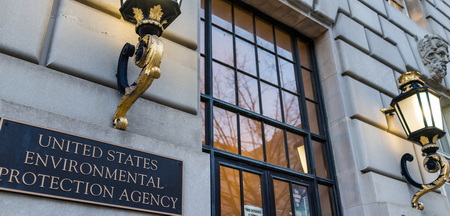

A Securities and Exchange Commission (SEC) advisory panel on investor issues this week endorsed the agency’s proposed climate disclosure rule, including a requirement for registered companies to support Scope 3 indirect emissions “if material” to investors. (Bloomberg Law and advisory panel recommendation, Sept. 21)
Scope 3 & CRE
- The Investor Advisory Committee’s recommendations are not binding, although the SEC could adopt final rules on corporate climate reporting requirements this fall. (BGov, Sept. 21)
- The Real Estate Roundtable submitted comments on June 10 objecting to the Commission’s Scope 3 approach. The comments noted that real estate companies neither control nor have access to data regarding emissions from third parties in their “value chains.” (Roundtable Weekly, June 10 and June 24)
- A joint industry letter filed on June 13 from 11 national real estate trade groups also opposed the SEC’s proposed approach, emphasizing that corporate disclosures on indirect Scope 3 emissions should be voluntary.
SEC Authority & EPA Funding

- Litigation is expected to challenge any final Commission regulation—especially in light of a recent Supreme Court decision in West Virginia v. EPA that questioned whether the SEC has “clear” authority from Congress to regulate climate matters.
- House Financial Services Committee Ranking Member Patrick McHenry (R-NC) and other Republican committee members wrote to SEC Chair Gary Gensler this week to request the SEC provide a list of all pending and upcoming rulemakings with the specific Congressional authority supporting each action. (Policymakers’ letter, Sept. 20)
- Apart from the SEC, the Environmental Protection Agency (EPA) received a modest sum from Congress ($5 million) under the recently enacted Inflation Reduction Act (IRA) to help standardize voluntary corporate commitments to reduce greenhouse gas (GHG) emissions.
- The new EPA funds are not “meant to create a parallel program … in case the SEC rule is scrubbed,” but will rather be used for climate models and software to hold companies “accountable” for the climate commitments they are already making. (BGov, Sept 21)
- EPA backed the SEC’s climate disclosure proposal in a recent letter— stating the Commission has “broad authority to promulgate disclosure requirements that are ‘necessary or appropriate … for the protection of investors.’”
The Roundtable’s Sustainability Policy Advisory Committee (SPAC) will remain engaged with policy makers on climate risk disclosure rules that affect commercial real estate.
# # #
Senators Challenge SEC Chair on Proposed Climate Rule


Senate Banking Committee members challenged Securities and Exchange Commission (SEC) Chair Gary Gensler, above, during an oversight hearing yesterday about the agency’s proposed climate disclosure rule. (CQ, Sept. 15 and Yahoo Finance, Sept. 16)
SEC Authority Questioned
- Committee Ranking Member Pat Toomey (R-PA) opened the hearing by stating, “The SEC is wading into controversial public policy debates that are far outside its mission and its expertise.”
- Toomey pressed Gensler about a June Supreme Court ruling that executive branch agencies “cannot use novel interpretations of existing law to pretend they have legal authority to support sweeping policy changes, including on climate change, that Congress never intended.” (Toomey Opening Statement)
- Toomey asked, “In light of the EPA v. West Virginia case, have you given any consideration to rescinding that rulemaking?” Gensler replied that the Commission is “seriously” considering the high Court ruling and 14,000-plus public comments to assess its legal authorities to ensure that registered companies provide material, decision-useful information about climate risks to investors. (SEC docket with list of organizations and individual comments)
- Senator Jon Tester (D-MT) explained that the SEC’s proposal would require farms and other small businesses to estimate and disclose carbon emissions because they sell products and services to public companies. Senators Mike Rounds (R-SD) and Steve Daines (R-MT) shared Tester’s concerns (CQ, Sept. 15)
A CRE Priority

- The SEC’s climate proposal, if finalized, would require all SEC registrants to quantify direct GHG emissions (“Scope 1”) and emissions attributable to electricity purchases (“Scope 2”) through annual 10-Ks and additional filings. (SEC News Release | Proposed Rule | Fact Sheet, March 22)
- The SEC also proposed that a company would need to report on “Scope 3” indirect emissions if they are “material” to investors. In June 10 comments, The Roundtable objected to the Commission’s proposed Scope 3 approach because real estate companies neither control nor have access to data regarding emissions from third parties in their “value chains.” (Roundtable Weekly, June 10 and June 24)
- A joint letter filed on June 13 from 11 national real estate industry trade groups echoed the issues raised by The Roundtable in its earlier comments.
The SEC is expected to issue a final climate reporting disclosure rule sometime this fall. If the Commission votes to regulate Scope 3 emissions, the recent SCOTUS decision in West Virginia v. EPA is likely to spark litigation, raising questions as to whether the SEC has authority from Congress to regulate climate disclosures and emissions.
# # #
